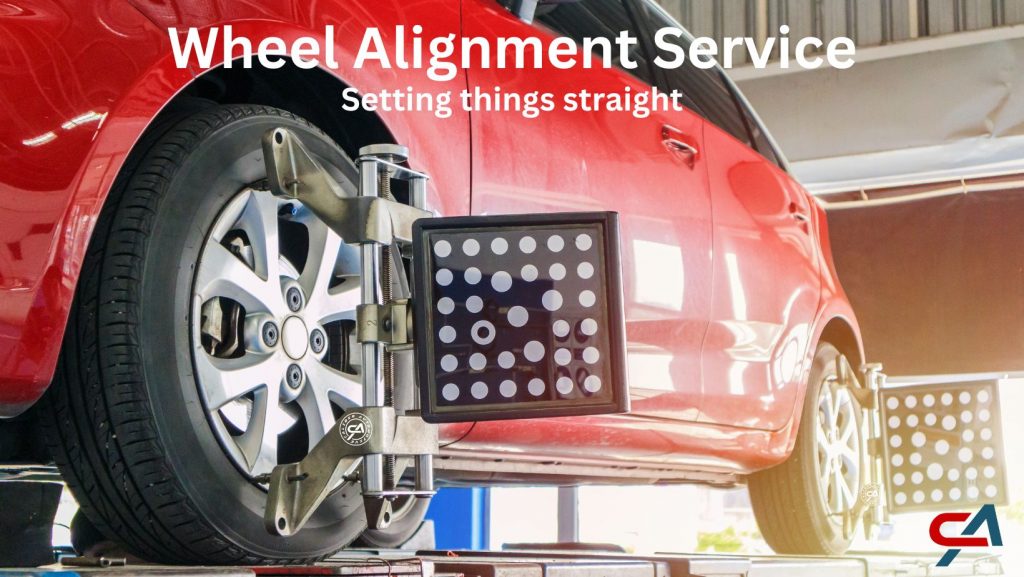Precision on the Road: The Comprehensive Guide to Wheel Alignment Service
Behind the steering wheel’s confident grip lies a complex interplay of components that dictate your vehicle’s trajectory on the road. Wheel alignment is a critical yet often overlooked aspect of automotive maintenance. In this detailed guide, we’ll navigate the intricacies of wheel alignment service, shedding light on what it entails and why it is instrumental in ensuring a smooth and safe driving experience.
Wheel Alignment Defined: The Science of Proper Tire Angles
Wheel alignment is a specialized service that involves adjusting the angles of the wheels to align with the manufacturer’s specifications. The critical angles addressed during a wheel alignment include camber, caster, and toe. These adjustments ensure the tires make optimal contact with the road surface, promoting even tire wear, stability, and precise steering control.
Camber Adjustment: The Tilt of the Tires
Camber refers to the vertical tilt of the wheels concerning the vehicle’s vertical axis. Excessive positive or negative camber can lead to uneven tire wear and compromise handling. During a wheel alignment, technicians adjust the camber angle to ensure that the tires make complete contact with the road surface, promoting even wear across the tread.
Caster Adjustment: Steering Stability and Returnability
The caster is the angle of the steering axis concerning the vehicle’s vertical axis. It influences steering stability and the vehicle’s returnability to the center position after a turn. Proper caster adjustment ensures balanced steering control and a straight steering wheel when driving straight.
Toe Adjustment: The Direction of the Tires
Toe refers to the angle at which the tires point concerning each other. Excessive toe-in or toe-out can result in uneven tire wear and affect the vehicle’s handling. During a wheel alignment, technicians adjust the toe angle to align the tires parallel to each other, ensuring straight-line stability and minimizing tire wear.
Benefits of Wheel Alignment Service: A Smooth and Safe Ride
Even Tire Wear:
Proper wheel alignment promotes even tire wear across all four tires. This extends the lifespan of the tires and ensures that they wear uniformly, reducing the need for premature replacements.
Improved Fuel Efficiency:
When the wheels are correctly aligned, the vehicle experiences reduced rolling resistance. This can improve fuel efficiency, as the engine doesn’t have to work as hard to overcome unnecessary resistance.
Enhanced Handling and Steering Control:
Correct wheel alignment translates to precise steering control and improved handling. A properly aligned vehicle responds more predictably to steering inputs, providing a safer and more enjoyable driving experience.
Reduced Stress on Suspension Components:
Misaligned wheels can place undue stress on suspension components, leading to premature wear and potential damage. Wheel alignment service helps alleviate this stress, preserving the longevity of the suspension system.
Safer Driving Conditions:
Proper wheel alignment contributes to a stable and controlled driving experience. This is especially crucial during emergency maneuvers or adverse road conditions, enhancing overall safety.
When to Seek Wheel Alignment Service: Signs and Milestones
Uneven Tire Wear:
If you notice uneven wear patterns on your tires, such as one Side wearing more than the other, it may indicate the need for a wheel alignment.
Steering Pulls to One Side:
If your vehicle tends to drift or pull to one Side, even when the steering wheel is centered, it could be a sign of misaligned wheels.
Steering Wheel Off-Center:
An off-center steering wheel when driving straight suggests a potential alignment issue that should be addressed.
After Suspension Repairs or Component Replacement:
Whenever suspension components are replaced, or repairs are made, it’s advisable to check and, if necessary, realign the wheels to ensure optimal performance.
At Regular Maintenance Intervals:
Many manufacturers recommend checking and, if needed, performing wheel alignment as part of routine maintenance, typically at specific mileage intervals.
Wheel Alignment Process: Precision in Action
Initial Inspection:
The process begins with a thorough inspection of the tires, suspension components, and steering system to identify any existing issues that may impact the alignment.
Alignment Measurement:
Using specialized equipment, technicians measure the current alignment angles of the wheels, including camber, caster, and toe.
Adjustment:
Based on the measurements and the manufacturer’s specifications, technicians precisely adjust the wheel angles using alignment equipment.
Final Verification:
After adjustments, a final verification ensures the alignment angles meet the specified tolerances. This may involve a road test to assess the vehicle’s handling and steering response.
Adjustment Documentation:
Technicians often provide documentation of the before-and-after alignment measurements, offering transparency and clarity regarding the adjustments made.
Wheel Alignment Technologies: Advancements in Precision
Modern wheel alignment utilizes advanced technologies, such as laser alignment systems or computerized wheel alignment machines. These technologies provide highly accurate measurements and enable technicians to make precise adjustments, ensuring optimal wheel alignment.
Wheel alignment service is not merely a technical adjustment; it’s a meticulous process that influences every aspect of vehicle handling; providing you comfort to cruise in control. All this while preventing premature tire wear and unstable vehicle handling.

